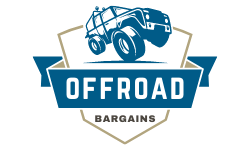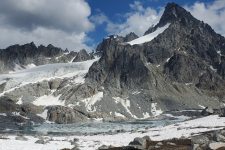
Alaska’s Bomber Traverse Trip Guide
The Bomber Traverse is an iconic Alaskan adventure that embodies everything the state is known for: raw beauty, challenging terrain, and remote backcountry. The traverse is named after a B-29 Superfortress that crashed on a routine training run in 1957. Four out of the ten crew survived and the glacier it landed on is now named the Bomber Glacier.
The wreckage remains to this day. One of the few hut-to-hut options in the state, the Bomber Traverse is stewarded by the Mountaineering Club of Alaska, the American Alpine Club, and the Hatcher Pass State Recreation Area. Membership to the respective clubs is required to stay at the huts.
Located an hour north of Anchorage in the Talkeetna mountains, the Bomber Traverse is a 20-mile loop incorporating trails, glaciers, boulder fields, and high alpine terrain. It features some of the most impressive scenery Alaska has to offer while affording you the satisfaction of seeing it all under your own power. Don’t let the mileage of this trip fool you, it’s most commonly done in three to four days as the rugged terrain requires a slow pace. Those taking on this adventure should be comfortable navigating off-trail for extended periods as most of the route is off-trail or sporadically marked with cairns.
Like most of Alaska, the Bomber Traverse rewards hikers with impressive beauty and a sense of accomplishment moving across the rugged landscape. However, this is a challenging route with a long history of rescues and close calls of those who attempted it unprepared. Only hike this route if you are comfortable navigating off trail, know how to cross glaciers and can traverse boulder fields safely.
This adventure is highly rewarding and is sure to deliver a true Alaskan adventure. It’s just one of the dozens of backpacking trip guides we put together based on our experiences.
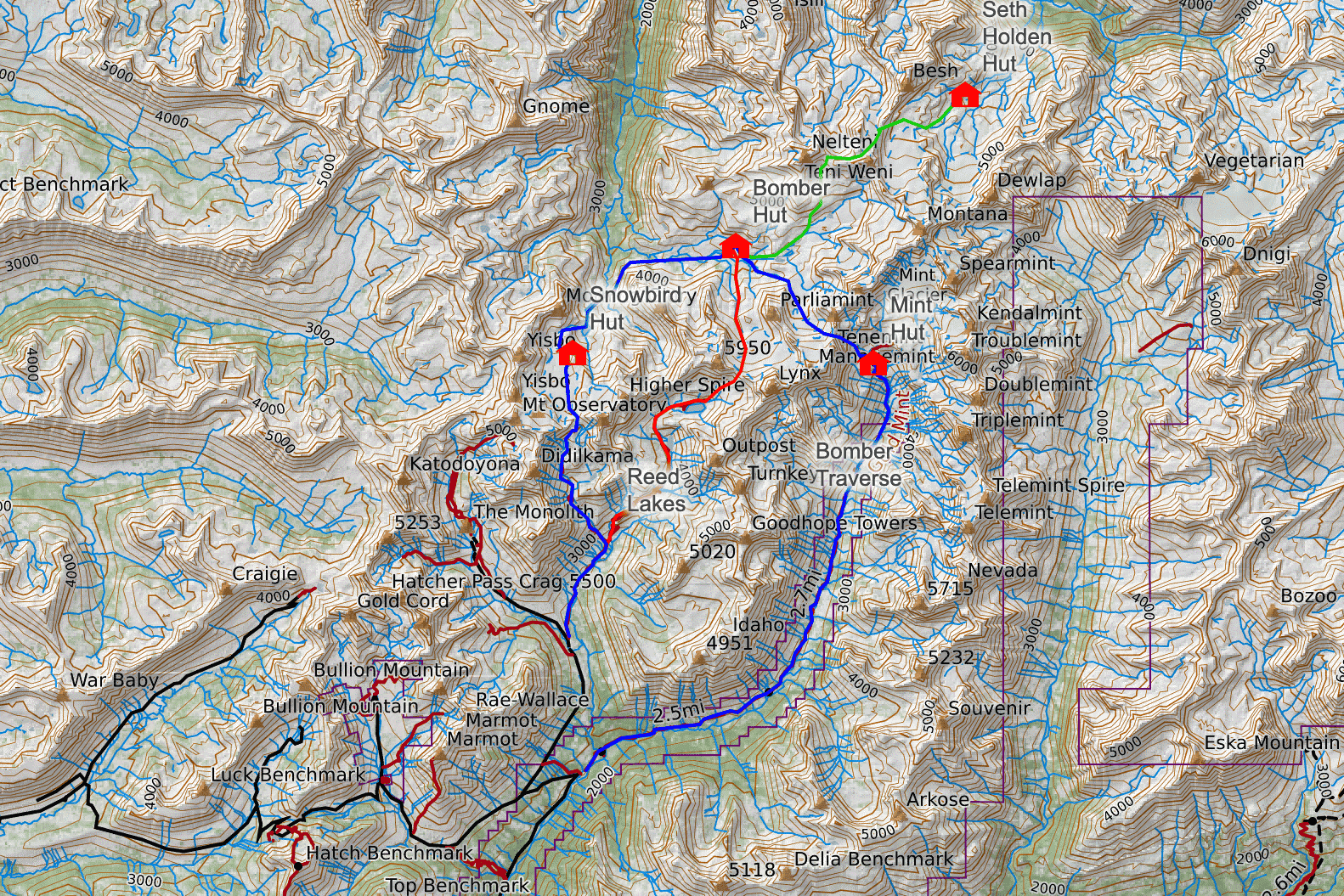
Quick Facts
- Distance: ~20 miles
- Days Needed: 3-4
- Type of Trail: Loop
- Elevation Gain: ~6,500’
- Best Time to Travel: End of June to August
- Permits: No permits are required for hiking. Parking pass is required for Alaska State Parks. Membership to the Mountaineering Club of Alaska and the American Alpine Club is required to stay at the huts.
- Difficulty: Strenuous
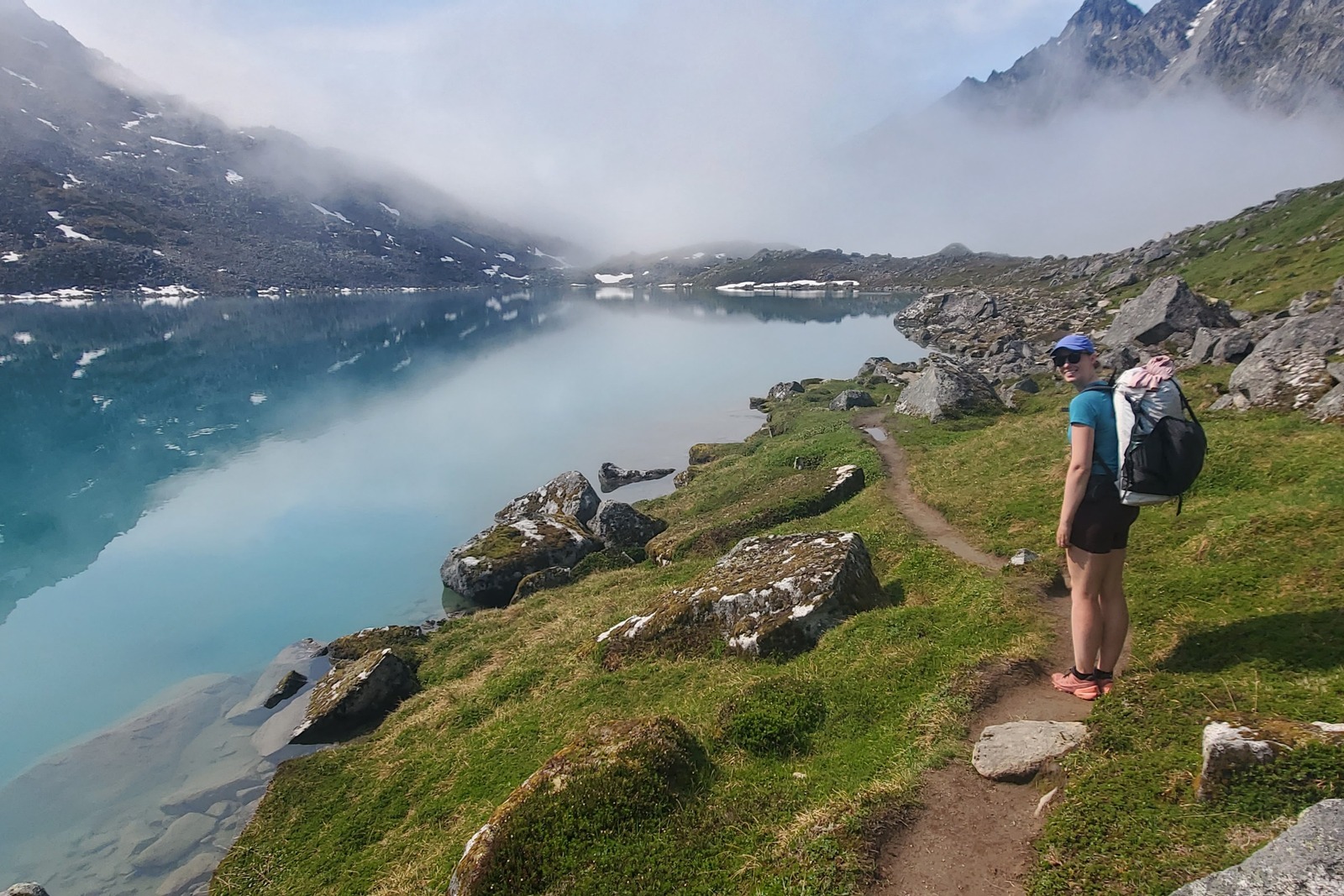
Highlights
- Glacier views
- Remote backcountry
- Wildlife
- Alpine tundra
- Options to extend trip
- Endless daylight in summer
- Wildlife
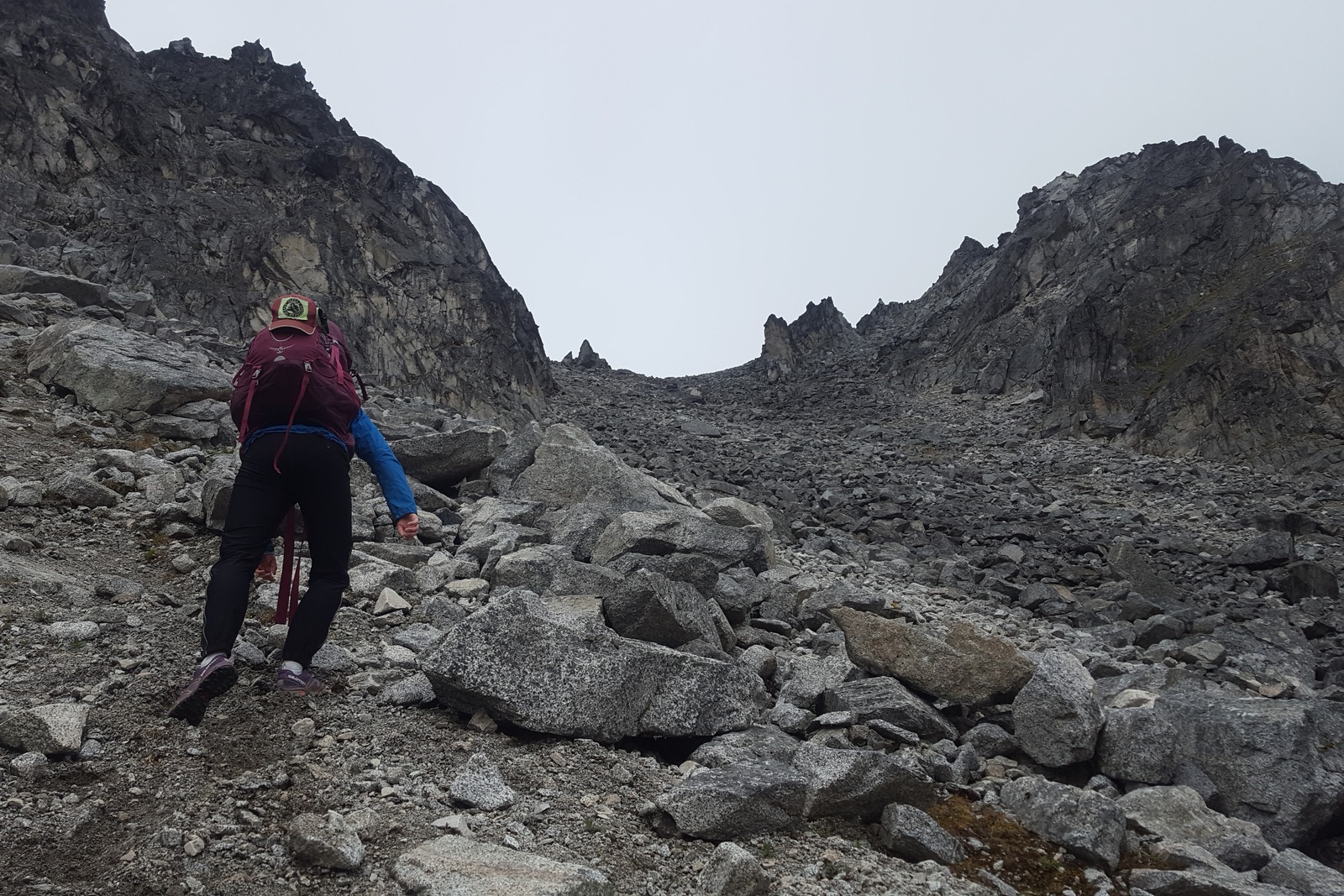
Lowlights
- Mosquitos
- Challenging weather
- Busy during peak season
- Unstable boulders
- Brush and mud at lower elevations
- Long-lasting winter snowpack
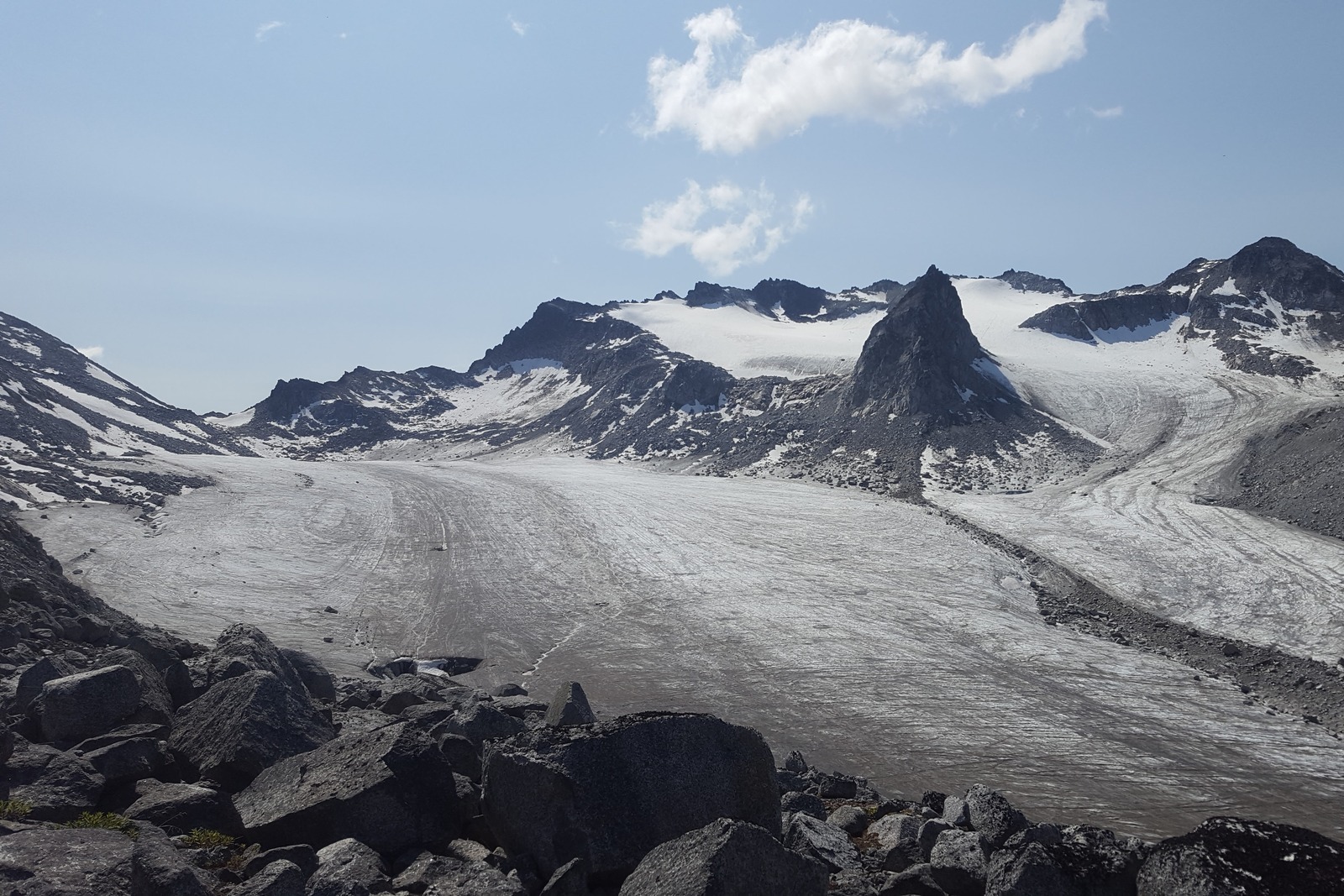
Best Time to Hike
The Bomber Traverse receives an average snowfall of over three hundred inches annually. This snowpack has helped create the Talkeetna Range’s impressive glaciers but can make travel by foot challenging. Snow lingers at high elevations year round and it’s not uncommon for the entire route to be under snow well into June.
The Bomber Traverse is best attempted starting in late June typically around the time of summer solstice. Any earlier you will likely encounter deep, unsupportable snow that will greatly slow or even halt travel. Peak season is in July and the season starts to wind down by the end of August as fall rains and snow start to fall. The season is short, making the route popular on sunny weekends in July.
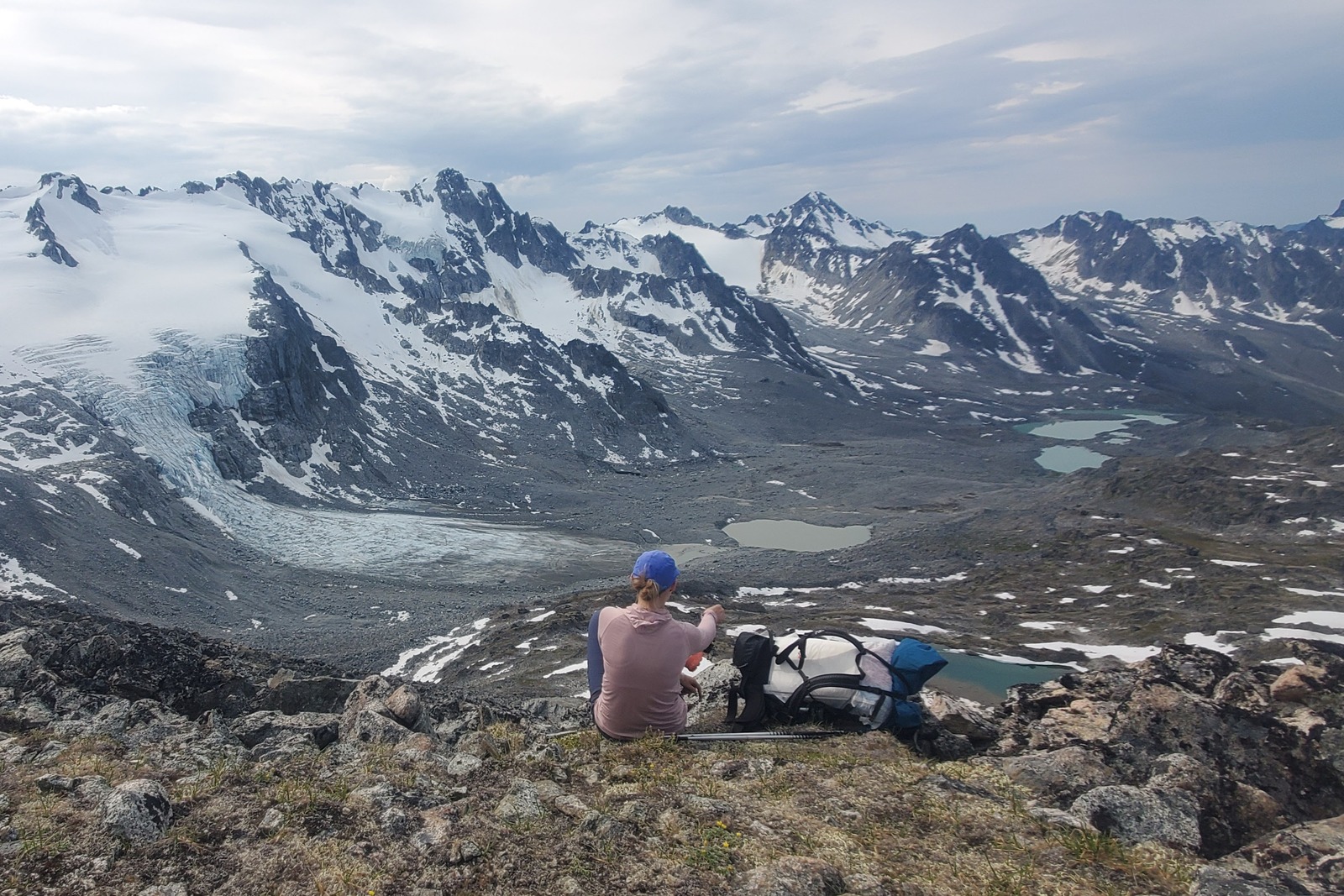
Difficulty of Trail
Around twenty miles long, the mileage of the Bomber Traverse belies its true difficulty. With the only trail at the beginning and end of the route, the rest is completely off-trail. Sporadically marked by cairns, those attempting this route must be adept at navigating with a map and compass, and know how to safely cross off-trail terrain including glaciers.
Most parties take three to four days to cover the route completely and it’s common to cover one to two miles in an hour depending on the terrain. The terrain incorporates low-elevation brush and mud, alpine meadows, high mountain glaciers, and notoriously precarious boulder fields. You’re sure to finish each day of this trip tired yet satisfied.
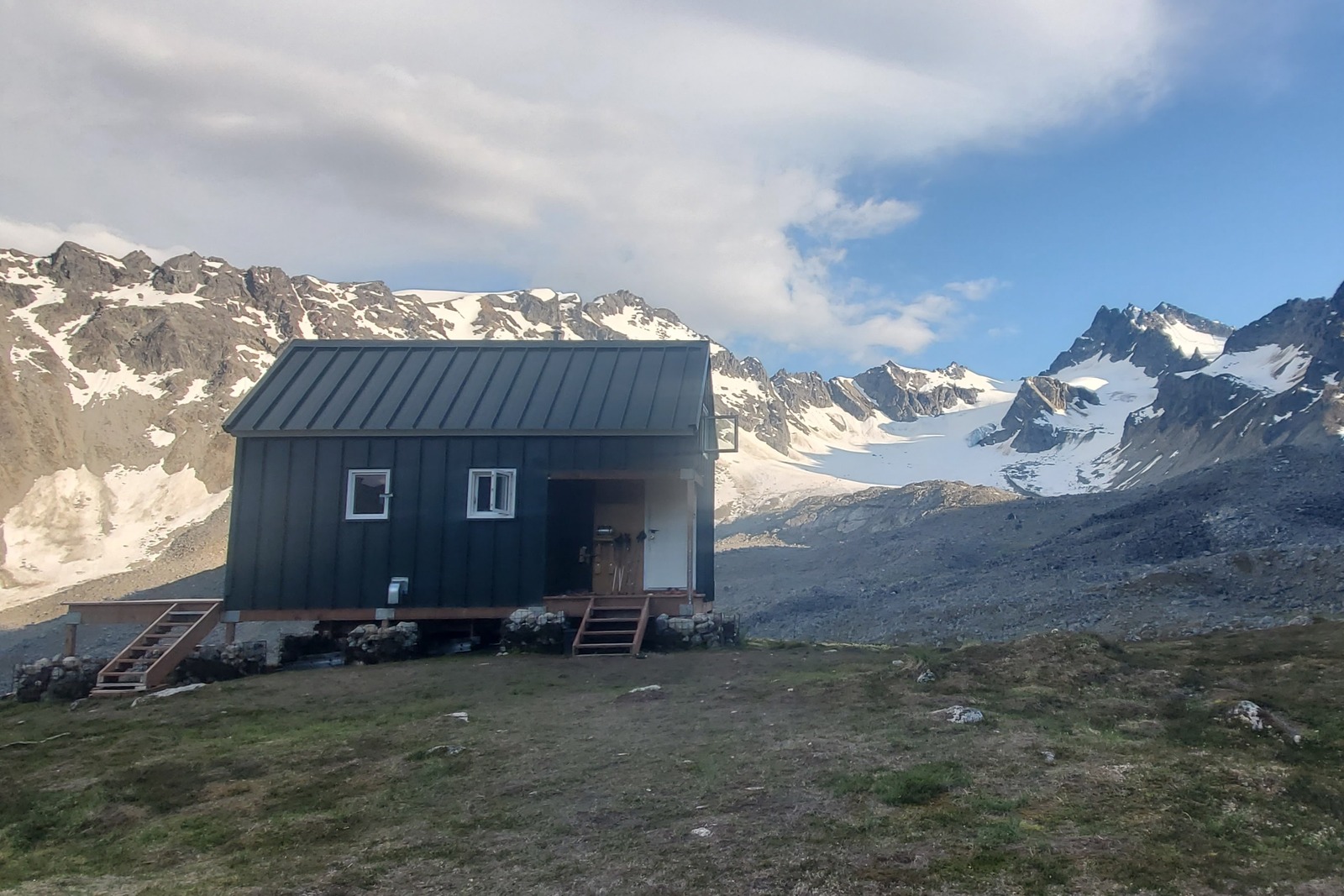
Weather Conditions
The Bomber Traverse has a long history of rescues and close calls from those not prepared for the challenges this route offers. One of the most significant hazards, like in all of Alaska, is the weather. Snow is a possibility any month of the year and heavy rain is very likely during the summer months. Winter snows linger all summer and can impact travel. Come prepared with adequate clothing and gear that will likely feel more heavy-duty compared to summer trips in other locations.
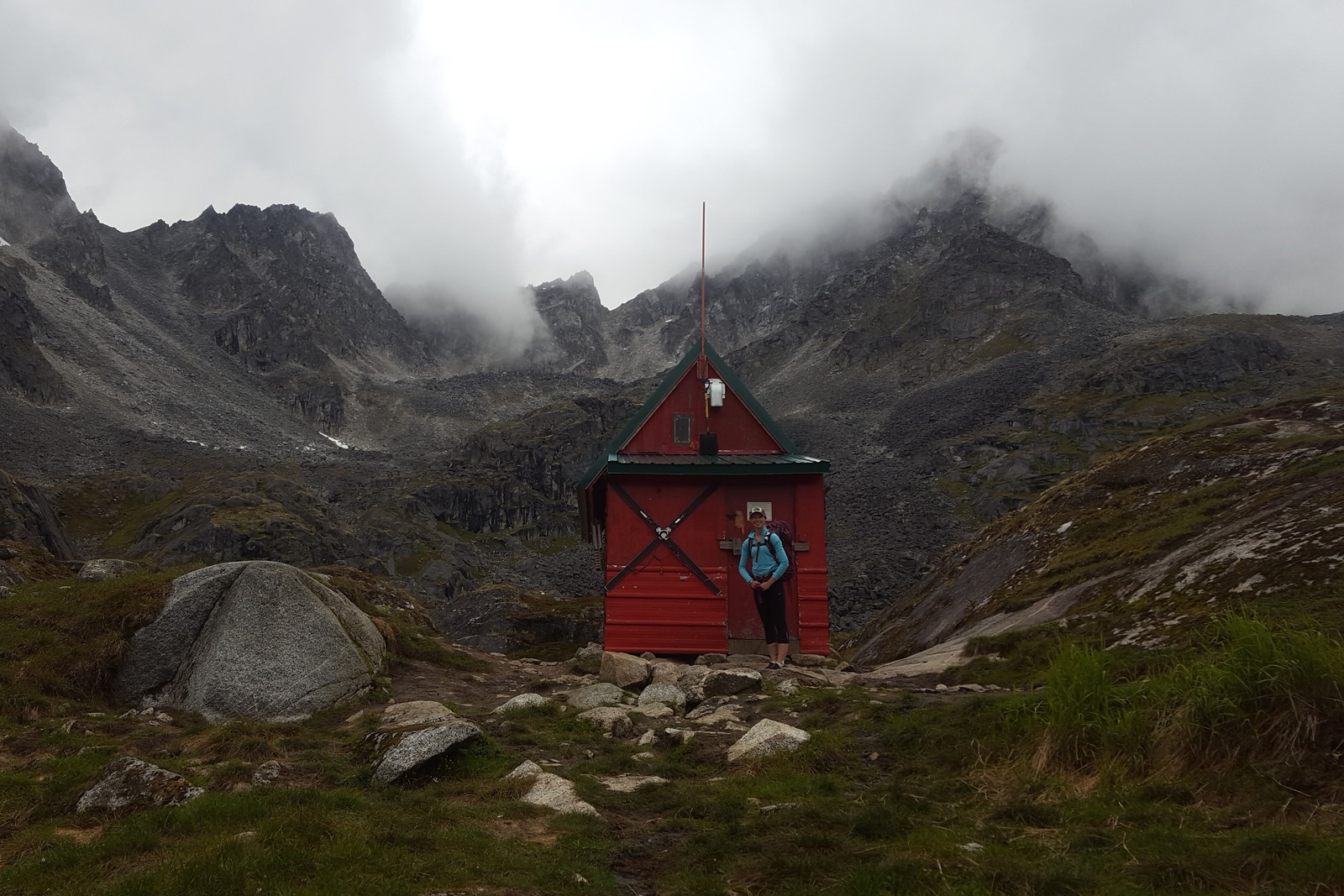
Wildlife
During summer salmon runs, most bears can be found happily dining along low-elevation rivers, so encountering a bear near water is always a possibility. Moose are found along creeks and in willow thickets. Calving season is in early summer and cows are especially protective at this time.
We strongly recommend bear spray for this trip as well as a bear can or Ursack for food storage. It is also highly effective against pesky ravens, parka squirrels, or marmots.
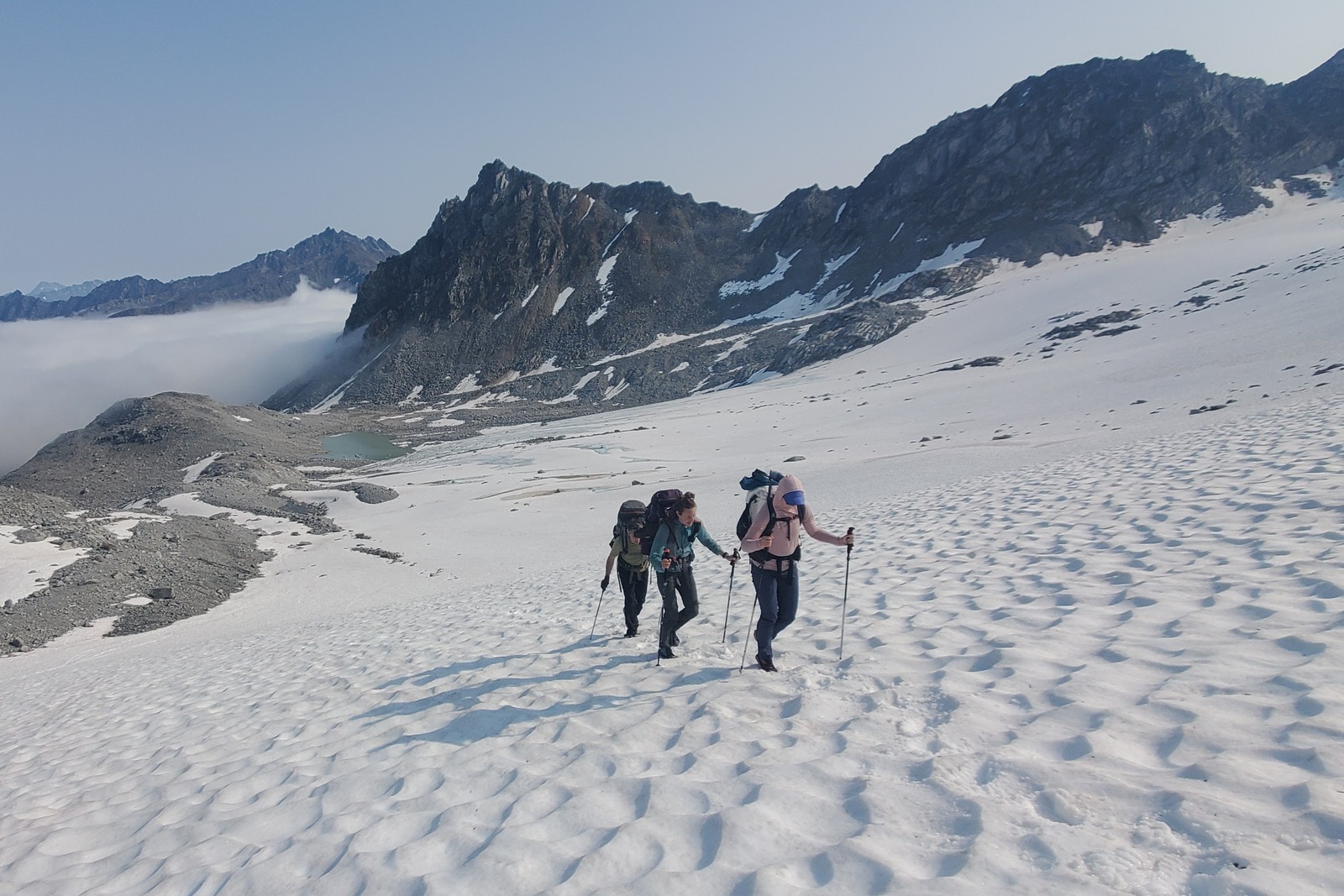
Terrain
Travel is largely off-trail outside of the trails at the beginning and end of the route. This involves crossing passes with large boulders. Take care when crossing these numerous boulder fields and travel with a first aid kit and means of communication in the event of an emergency.
The route also involves crossing glaciers. While these small glaciers (by Alaska standards) are not heavily crevassed, there are a few crevasses and moulins to avoid. Knowing how to read a glacier and avoid snow- and ice-related hazards will be useful for this route. We recommend traveling with an ice axe and traction devices as the route involves some steep ascending/descending of ice and snow, depending on snow coverage on the glaciers.

Planning Your Trip & How to Get There
Ted Stevens International Airport (ANC) is the nearest large airport to the route located approximately an hour away in Anchorage. It has daily service from many major airports in the Lower 48. Public transportation is limited in Alaska so plan on renting a car to get to and from the trailhead. Rental cars book up and can be expensive in the summer so plan accordingly.
Keep an eye on the weather well in advance of your trip to get an idea of the conditions. There are weather stations at the nearby Independence Mine State Historical Park and park rangers are always happy to provide information. Weather is notoriously fickle in Alaska, so take weather apps with a grain of salt and pack like you expect adverse conditions.
The Bomber Traverse Route
The Bomber Traverse is a loop that typically starts at the Gold Mint Trailhead and ends at the Reed Lakes trailhead, both located off Willow-Fishhook Road on the way to Hatcher Pass. Located approximately three miles apart, you can either walk the additional distance or leave a second car or bike to get back to your car at the end.
Start up the Gold Mint Trail which is initially wide and graveled. The farther up the trail the narrower and muddier it becomes. The trail parallels the beautiful Little Susitna River that gushes with aquamarine glacial meltwater. Be prepared to have to beat some brush as the trail becomes grown-in later in the season. Beavers also have the habit of forming dams along the river which frequently flood the trail.
Your feet are likely to get wet within a few miles of leaving the trailhead. After about 7.5 miles of winding through the brush, the trail starts to climb steadily into the alpine. The trails braids, but take the most traveled one that generally trends up and right. You will eventually reach the Mint Hut at approximately 4,300 feet. Its iconic red walls are a welcome sight to weary travelers. In peak season expect to share the hut and bring a tent in case it is full. There is great camping above the hut with plenty of running streams and tranquil alpine tarns for water. Most parties spend their first night of the trip here.
After leaving the hut, aim for the prominent pass in the background: Backdoor Gap. Here you will get your first taste of boulder hopping as you ascend the steep pass. Be prepared for loose scree and large, wobbly boulders on a steep slope. After about a 1500’ climb you will reach the top of the pass greeted by expansive views of the Penny Royal glacier. On a clear day, you’ll have breathtaking views of Denali and the Alaska Range.
From there, the route descends onto the Penny Royal, generally following the flow of water downhill. Be aware of many opportunities to cliff out as you pick your way downhill. You will eventually see the green Bomber Hut in the distance at an elevation of approximately 4000’ across the valley.
From the Bomber Hut, you have options to either shorten or lengthen your trip. To lengthen, head to the Holden Hut for more adventure. To shorten, head up the Bomber Glacier (the site of the crashed bomber) over Bomber Pass and down the steep boulder field to Reed Lakes and take the well-traveled path back to the trailhead.
To continue to the Snowbird Hut, continue down towards Bartholf Creek, being sure to sidehill high to avoid brush. At an elevation of approximately 3400’, cross Bartholf Creek and start to climb uphill, following the glacier stream that pours from the Snowbird Glacier. After about a 1400-foot climb on an intermittent trail and boulders, you will arrive at the Snowbird Glacier. The hut is located along the left side of the glacier atop a lateral moraine.
The Snowbird Hut has expansive views of its namesake glacier surrounded by jagged peaks. Dip water directly from the glacier’s surface for refreshing and pure Alaskan glacier water. Head up the relatively flat glacier to reach Glacier Pass, the high point of the trip at 5,100’.
From there it’s a 2500’ descent back down to the valley floor to intersect with the Reed Lakes Trail. You will pass many old mine remains along the way, complete with abandoned shafts and buildings (we recommend keeping a safe distance from any open mines).
Once hitting the valley floor, take a right on the Reed Lakes Trail for an easy, couple-mile hike back to your car.
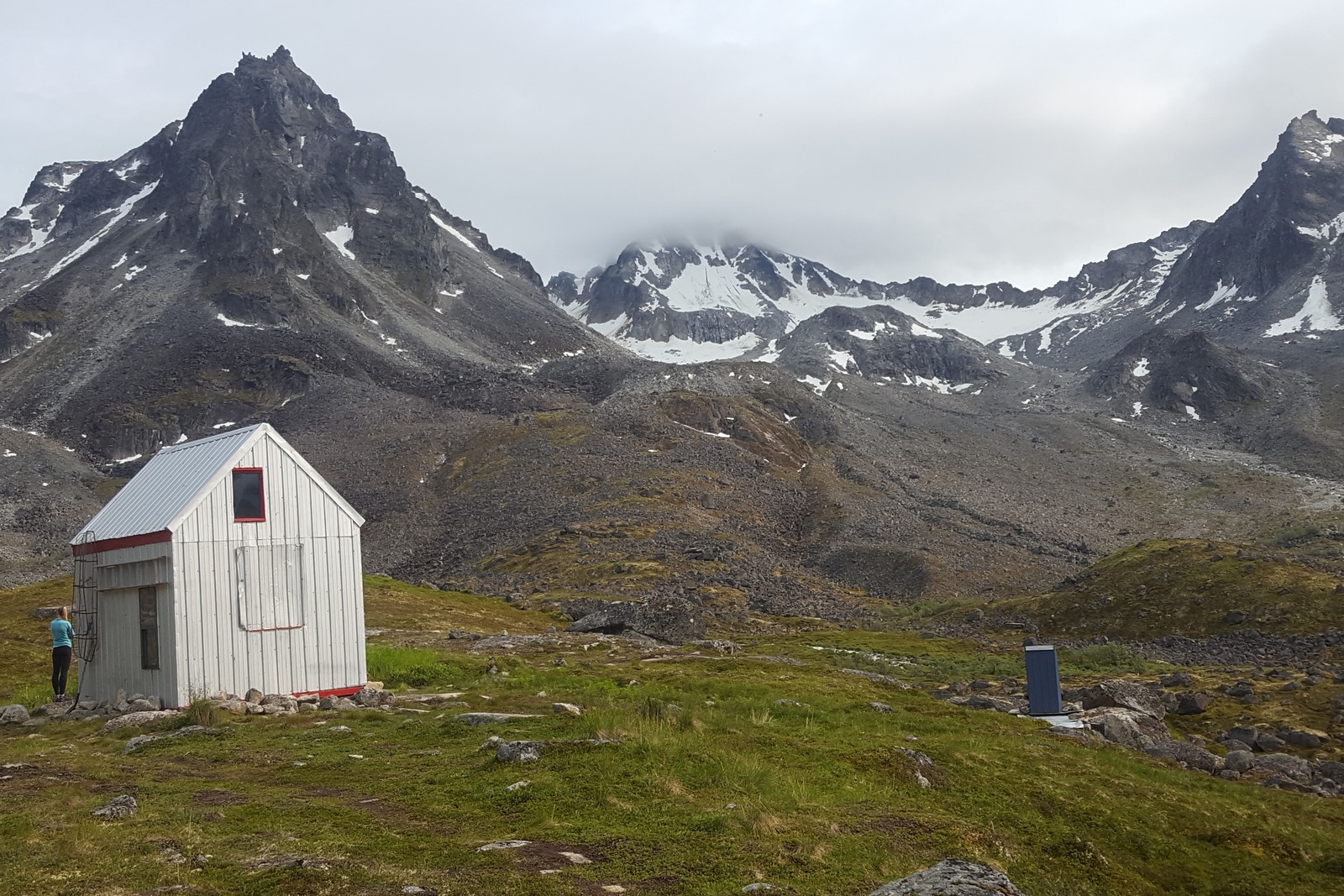
Permits
No permits are required for this route. However, you do have to be a member of the huts to stay in them overnight. The Mint/Bomber huts are both managed by the Mountaineering Club of Alaska ($30/year) and the Snowbird hut is managed by the American Alpine Club ($45/year). A daily parking pass is required for Alaska State Parks.
Backpacking Gear – What to Pack
Gear List
Make sure to check out our Ultimate Backpacking Checklist so you don’t forget something important.
Below you’ll find our current favorite backpacking gear. If you want to see additional options, our curated gear guides are the result of many years of extensive research and hands-on testing by our team of outdoor experts.
BACKPACK
Conclusion
The Bomber Traverse is a challenging route that embodies a typical Alaskan adventure. The weather is fickle, the scenery amazing and the terrain challenging. As in any backcountry adventure, please adhere to Leave No Trace principles to leave as little impact as possible.
Treat the huts and those staying there with respect and become a member of the respective clubs to assist in their stewardship. Expect to share the huts during peak season and it’s highly recommended to pack a tent in case they are full. With proper planning, preparation, equipment, and skills, the Bomber Traverse is a world-class adventure that is sure to please anyone wanting a challenging and rewarding experience in the backcountry.
And be sure to check out some of our other popular content:
